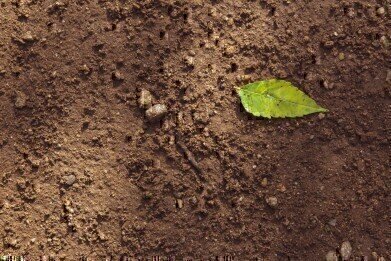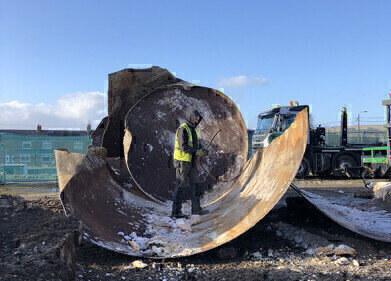Soil Remediation
5 Incredible Ways to Clean Soil
Oct 26 2014
The growing industrialisation of the world over the last centuries has led to a considerable amount of soil degradation on a global scale. Soil can become contaminated through a variety of processes, including poor waste disposal methods, landfill sites, oil spillages or nuclear pollution, among many others.
If the contamination was brought about by organic substances such as oil, then the soil should, in theory, be treatable by composting. However, the exponentially-widespread use of chemicals in industry has led to a significant amount of soil becoming polluted with other substances, such as polyaromatic hydrocarbons (PAH), polychlorinated biphenyls (PCB), trinitrotoluene (TNT) and a variety of dioxins. Indeed, of all polluted soil which is excavated, 45% is contaminated with compounds other than oil – which unfortunately, are not able to be treated by composting alone.
Traditionally, these soils have been deposited in a landfill and forgotten about. However, such a solution is unsustainable and short-sighted, to say the least. Luckily, advances in bioremediation, or the treatment of the soil by naturally-occurring organisms, as well as other methods, have allowed for optimism in long-term soil regeneration.
Here are 5 techniques at the forefront of soil cleaning innovation:
1) Phytoremediation
This technique involves growing plants and trees to actively remove harmful elements from the soil. By planting such species as willows, birches and leguminous plants, the pollutants can be sucked up into the parts of the plant that are above ground. These can then be harvested and destroyed off-site.
2) Fungi
Researchers in Finland have found a way to use fungi to clean soil in a more sustainable way than traditional methods. Rather than sucking up the pollutants to be harvested, as in phytoremediation, the fungi actually alters the makeup of the pollutants. Their mycelia is allowed to grow in the soil, which has the effect of polluting the compounds and breaking them down into a safer state. To learn more about the findings of Erika Winquist and her team, please read this article: Bioremediation of Contaminated Soil with Fungi.
3) Bacteria
Certain types of bacteria have been found to be not only resistant to arsenic, but are also able to neutralise and decontaminate polluted land. In fact, this article, Can Bioremediation Clean-Up Nuclear Waste?, actually discusses the possibility of such bacteria being applied to the remediation of soil affected by uranium or other radioactive materials.
4) Freezing
The nuclear disaster in Fukushima in 2011 had grave consequences for the people of Japan, as well as the soil surrounding the plant. Such ground became immediately contaminated with incredibly high levels of nuclear waste. A stop-gap solution (perhaps until bacterial bioremediation techniques can be further refined) has been employed by the Japanese government, by freezing the contaminated areas. While this doesn’t exactly clean the radioactive soil, it does maintain the cleanliness of the soil around it. For more information, see this article: TEPCO to Use Frozen Contaminated Soil to Stop Groundwater Leakage.
5) Polymer
Quite aside from contaminated soil, its uncontaminated counterparts could also benefit from better hygiene. In an attempt to achieve this, a UK company has pioneered the use of polymer to improve water and nutrient retention in soil, thus improving its health and cleanliness in the process. The article, Ground breaking New Super Absorbent Polymer to Retain Soil Hydration and Nutrients, discusses the advantages of the use of the material in irrigation sites, plant growth and drought prevention.
Events
IWA World Water Congress & Exhibition
Aug 11 2024 Toronto, Canada
Aug 25 2024 Stockholm, Sweden and online
Sep 03 2024 Mexico City, Mexico
Sep 03 2024 Mexico City, Mexico
Sep 03 2024 San Diego, CA, USA













